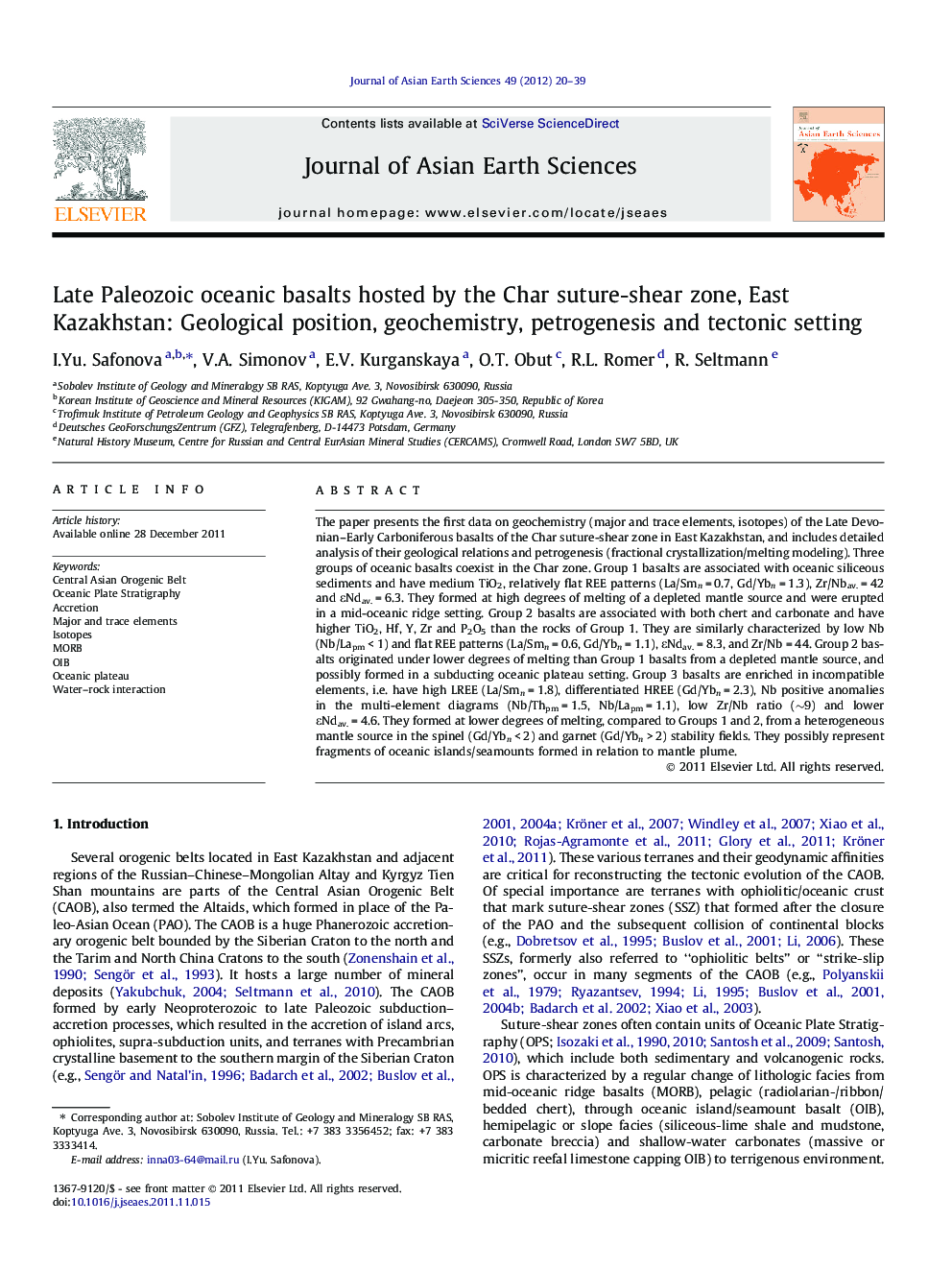| Article ID | Journal | Published Year | Pages | File Type |
|---|---|---|---|---|
| 4731502 | Journal of Asian Earth Sciences | 2012 | 20 Pages |
The paper presents the first data on geochemistry (major and trace elements, isotopes) of the Late Devonian–Early Carboniferous basalts of the Char suture-shear zone in East Kazakhstan, and includes detailed analysis of their geological relations and petrogenesis (fractional crystallization/melting modeling). Three groups of oceanic basalts coexist in the Char zone. Group 1 basalts are associated with oceanic siliceous sediments and have medium TiO2, relatively flat REE patterns (La/Smn = 0.7, Gd/Ybn = 1.3), Zr/Nbav. = 42 and εNdav. = 6.3. They formed at high degrees of melting of a depleted mantle source and were erupted in a mid-oceanic ridge setting. Group 2 basalts are associated with both chert and carbonate and have higher TiO2, Hf, Y, Zr and P2O5 than the rocks of Group 1. They are similarly characterized by low Nb (Nb/Lapm < 1) and flat REE patterns (La/Smn = 0.6, Gd/Ybn = 1.1), εNdav. = 8.3, and Zr/Nb = 44. Group 2 basalts originated under lower degrees of melting than Group 1 basalts from a depleted mantle source, and possibly formed in a subducting oceanic plateau setting. Group 3 basalts are enriched in incompatible elements, i.e. have high LREE (La/Smn = 1.8), differentiated HREE (Gd/Ybn = 2.3), Nb positive anomalies in the multi-element diagrams (Nb/Thpm = 1.5, Nb/Lapm = 1.1), low Zr/Nb ratio (∼9) and lower εNdav. = 4.6. They formed at lower degrees of melting, compared to Groups 1 and 2, from a heterogeneous mantle source in the spinel (Gd/Ybn < 2) and garnet (Gd/Ybn > 2) stability fields. They possibly represent fragments of oceanic islands/seamounts formed in relation to mantle plume.
Graphical abstractFigure optionsDownload full-size imageDownload as PowerPoint slideHighlights► Three types of Late Devonian-Early Carboniferous oceanic basalts coexist in the Char zone: MORB, OPB and OIB. ► MORB-type basalts formed at high degrees of melting of depleted source and erupted in a mid-oceanic ridge. ► OPB-type basalts formed at lower degrees of melting of depleted source, in a oceanic plateau setting. ► OIB-type basalts formed from a heterogeneous mantle source and are fragments of plume-related oceanic islands.
